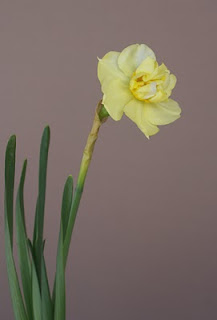It is that time of the year again – Santa is New Zealand-bound as I write, relatives galore are streaming back to their hometowns, and in all the fuss about the festive season, the poor old garden is likely to be overlooked.
Flowers play a large part in the way we celebrate the season though, with some plants intrinsically intertwined into the season, including the heavily scented Christmas lily, Lilum regale. This Chinese species always has a place in our garden, although my family did not have a tradition of using them. The Head Gardener’s family, on the other hand, coveted them dearly and some of our original stock came from her grandmother’s garden. We were given some other bulbs when we shifted here and these plants turned out to be giants - at over two metres tall they were twice the size of the other forms we grow. I decided it might be environmental and grew some from seed of the tall ones - and they are just as tall, so I have two strains here, each distinct.
They do, of course, have some things in common, including trumpet shaped flowers, wine-coloured on the outside as the trumpet expands, then pearly-white inside, with a marked golden throat. The anthers carry bright orange pollen, which stains the inside of the flower on wet days, and the clothes of those careless when picking them. And of course they share that magnificent heady perfume. I find it a little oppressive when the flowers are picked for the house, but love it in the garden when the white flowers shine in the evening air.
Another plant we associate with Christmas is a cultivated relative of the milkweed that is currently a curse in our new vegetable garden. The wede species I am referring to is the little yellow-green flowered annual, Euphorbia peplus. This is a common weed of cultivated ground, easily removed, but the milky sap is a skin irritant and many a gardener has cursed after accidentally getting some of the sap on their lips. Smoking gardeners beware!
The poinsettia is a widely grown pot plant, a Mexican relative of milkweed, and has the same milky sap, but the flowers are altogether more exciting. The varieties that we are most familiar with have bright red bracts – the flowers are small and insignificant in the middle of these modified leaves – but there are also pink, white and cream varieties around, as well as combinations of these.
If looked after, poinsettias will be long-lived house plants. They need a good amount of light but should be kept out of direct sunlight as sun can scorch the leaves. They prefer a warm and well-lit room so should be kept near a sunny window, or on a table in the middle of a sunny room. They should definitely be kept out of cool breezes, as they can be sensitive to the cold.
If you want to keep your plant happy and healthy it is very important to get the watering right – poinsettias like to be kept damp, but resent being over wet. Use the finger test – if the soil is moist the slightly spongy then the plant will be fine, but if it feels dry you should water until water flows freely out the bottom of the pot. Do not sit the pot in a puddle of water though - you are better the sit the pot in a sink until the water has stopped flowing out of the bottom before putting it back. There is no hard and fast rule about when to water – just use your common sense and check it every few days.





















